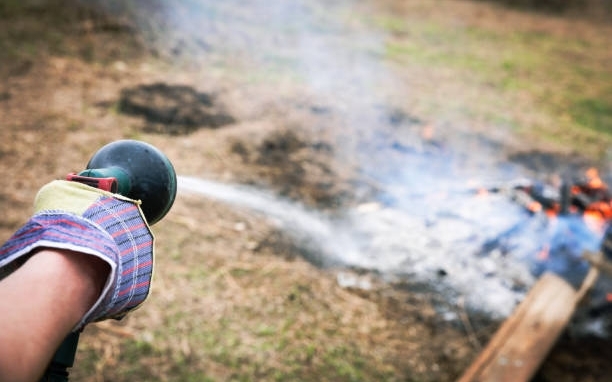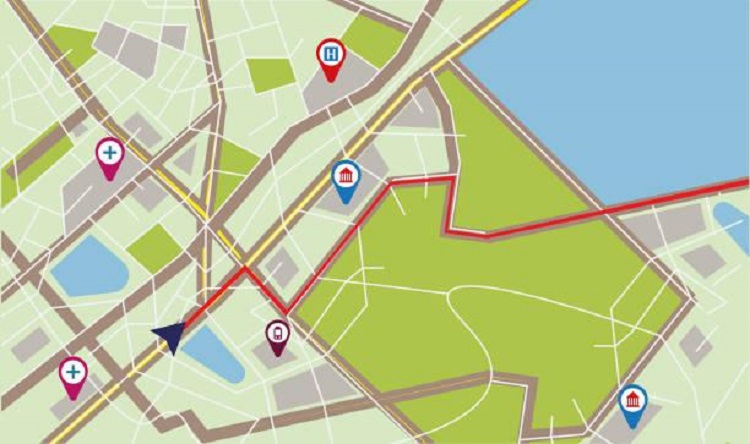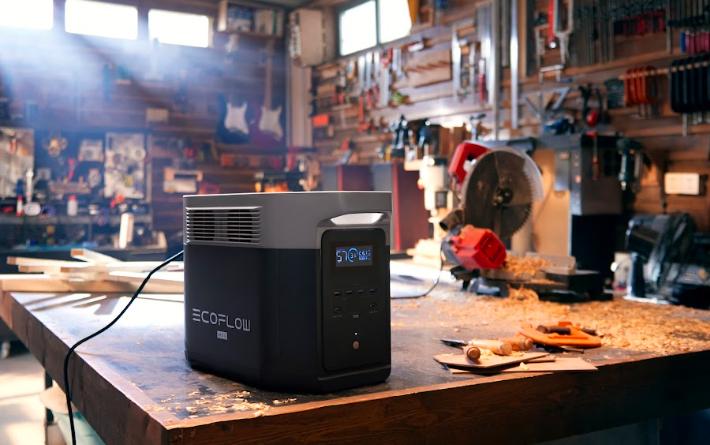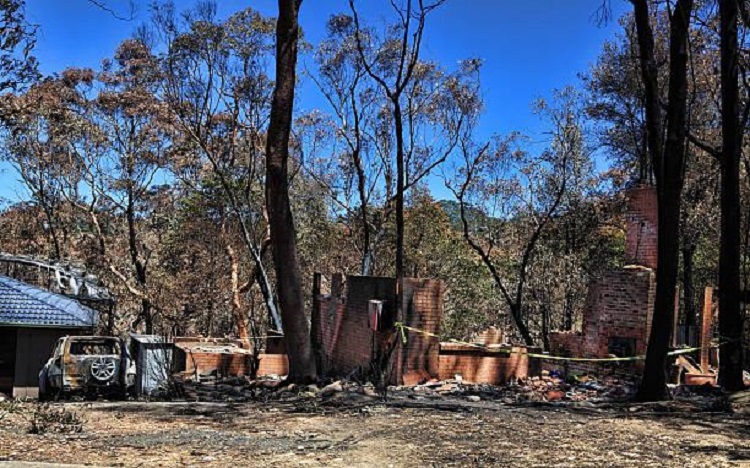Essential Guide to Bushfire in NSW: Causes, Preparedness, and Safety Tips
The NSW bushfires are an unfortunate reality that have impacted both the environment and the lives of many. With increasing frequency and intensity, these bushfires are a growing concern for residents, tourists, and emergency services alike. Understanding the causes, knowing how to prepare, and having a plan in place can make a significant difference in minimizing harm during bushfire seasons. At EcoFlow, we understand how important it is to be ready for any situation. We're here to help you understand the current NSW bushfires situation, the main causes behind these fires, and how you can stay safe before, during, and after a bushfire.
What Is the Bushfire Season in NSW?
The bushfire season in New South Wales (NSW) typically spans from late spring to early autumn (from October to March), with the peak period being during the summer months. During this time, hot temperatures, low humidity, and dry conditions create the perfect environment for fires to start and spread. While the timing and severity of bushfires can vary each year, these seasonal conditions make NSW highly susceptible to bushfires, and residents must be prepared for heightened risks during this period.
Current Bushfire Situation in NSW
As of 2025, NSW is once again in the grip of an intense bushfire season. While not all bushfires are large-scale, certain areas have seen significant damage due to prolonged dry spells, rising temperatures, and shifting weather patterns. According to the latest reports, the current bushfire season is showing an early start, with several fires already reported in regions like the Blue Mountains, Southern Highlands, and the Northern Tablelands. The impact of bushfires has been widespread, affecting not only the environment but also the lives of local communities, leading to evacuations and economic losses.


Main Causes Behind the NSW Bushfires
Several factors contribute to the increasing frequency and severity of bushfires in NSW. Understanding these causes can help us better prepare and respond.
Climate Change
One of the primary drivers of the bushfire crisis is climate change. Rising global temperatures have led to drier conditions, making it easier for fires to start and spread. As temperatures rise, vegetation dries out, creating a plentiful fuel source for fires. The impact of climate change is being felt more intensely, with extreme heatwaves exacerbating bushfire risks.
Human Activity
Around 40% of bushfires in Australia are caused by human activity. Common human-related causes include discarded cigarette butts, unintentional kindling of surrounding foliage during agricultural land clearing, outdoor fires that are not properly extinguished, and even arson.
Lightning Strikes
Lightning strikes are a natural cause of bushfires and are often responsible for igniting fires in remote areas. While lightning fires can occur year-round, they are particularly common during thunderstorms and hot, dry conditions. These fires are often harder to detect early on, making them more dangerous and harder to control.
Drought Conditions
Extended periods of drought significantly increase the likelihood of bushfires. As rainfall decreases and temperatures rise, vegetation becomes dry and highly flammable. The lack of moisture also reduces the ability of the soil to retain water, leading to more rapid fire spread when ignition occurs.
Most Affected Areas
Areas most affected by the ongoing fires include:
Blue Mountains: Known for its eucalyptus forests, this area is prone to bushfires, especially during the summer months. It attracts many tourists and residents, making it a priority for fire management efforts.
Southern Highlands: This region often faces severe bushfire risks due to its location in the Great Dividing Range and the extensive forests surrounding it.
Northern Tablelands: A region with large agricultural areas and forests, where the risk of bushfires is compounded by dry conditions.
South Coast: Communities along the coast are frequently at risk due to a combination of high temperatures and coastal winds.
If you live in or around these regions, it's essential to stay updated on the latest bushfire activity. To track bushfire updates, you can rely on official sources like:
NSW Rural Fire Service (RFS)Website and App: Real-time fire alerts and updates, including access to the NSW bushfire map for detailed fire location information.
Fires Near Me App: A mobile app providing up-to-date information on bushfire incidents.
NSW Fire and Rescue Website: Another trusted source for emergency alerts and fire tracking.
Bushfire Alert Levels in NSW
In light of the increasing fire risks, it's crucial to be familiar with the bushfire alert system to help you take action when necessary. The NSW Rural Fire Service uses a three-level alert system to guide you during bushfire emergencies.
Advice (Yellow): A fire has started, but there's no immediate danger. Stay informed as conditions can change. Watch and Act (Orange): There's a heightened level of threat. Conditions are changing, and you need to start taking action now to protect yourself and your family.
Emergency Warning (Red): An Emergency Warning is the highest level of bushfire alert. You may be in danger and need to take action immediately. Any delay now puts your life at risk.
How to Prepare for a Bushfire in NSW
Knowing the bushfire alert levels is the first step, but preparation is key to ensuring your safety when a bushfire strikes. Being proactive can make all the difference. Here's a comprehensive guide to help you stay prepared:
1. Create a Bushfire Survival Plan
Talk with your family about what you'd do if a bushfire occurs. It's important that everyone knows the plan. Start by identifying evacuation routes, ensuring you have more than one way out and that the paths are clear.
Prepare a list of emergency contacts so you're never scrambling for important phone numbers. Choose a safe meeting point in case you get separated, and assign roles, like who will grab the emergency kit or look after the pets, to make everything run smoothly in a crisis.


2. Prepare Your Property
Taking care of your property can significantly reduce the risk of a bushfire spreading. Regularly mow your lawn, trim branches, and clear dry leaves or debris from around the home. If you're building or renovating, consider using fire-resistant materials like metal or brick for roofing and walls.
Installing metal mesh screens on windows can also help prevent flying embers from entering your home. Additionally, make sure you have a reliable water source, such as a water tank or pool, with hoses that can reach all areas of your property in case you need to put out small fires.
If you live in an area highly prone to bushfires, home battery backup solutions like EcoFlow DELTA 2 Portable Power Station could provide you with peace of mind. In case of a power outage during a bushfire, these backup solutions keep your essential appliances running smoothly. It's important to consider the backup generator size to ensure it meets the needs of your household, so you can stay powered up during emergencies.


3. Pack an Emergency Kit
Having a well-stocked emergency kit ensures you're prepared for evacuation or sheltering in place:
Essentials: Pack things like medications, important documents, clothing, food, and water.
Safety Items: Don’t forget a battery-operated radio, flashlights, extra batteries, and first-aid supplies.
Pet Supplies: If you have pets, make sure you have their food, water, and any necessary medications in your kit.
4. Stay Informed
Sign up for notifications from the NSW Rural Fire Service (RFS) and local emergency services to receive updates on fire risks. It's also important to regularly check the fire danger rating to understand whether the risk is moderate, high, extreme, or catastrophic. Keep an eye on updates from the RFS and other emergency services for real-time information to act quickly and safely when needed.
5. Keep Your Vehicle Ready
In a bushfire, your vehicle can be a lifesaver. Keep it in good condition with a full tank of fuel and pack your emergency kit, sturdy footwear, and protective clothing, so you're ready to evacuate quickly if needed.
6. Educate and Practice
Once your plan is in place, make sure everyone in your family understands it. Educate your family on evacuation routes, meeting points, and individual roles. Regularly practice the bushfire survival plan, so everyone is prepared and can act quickly when needed, ensuring a smooth response in an emergency.


What to Do During an Active Bushfire
When a bushfire is actively burning near you, staying calm and following the right steps is crucial:Combine the previous content with a smooth transition to start the next part.
1. Follow Evacuation Orders
If evacuation orders are issued, leave immediately. Follow your bushfire plan, stay calm, and avoid routes that are heavily impacted by smoke or fire. If you're advised to evacuate, don't wait—acting quickly can save lives.
2. Stay Indoors
If evacuation isn't possible, stay inside and find the safest room to shelter in. Ideally, this should be a room with few windows and doors. Keep them closed and block any gaps to prevent smoke from entering.
3. Listen to Authorities
Pay attention to official channels for the latest updates. This includes RFS, emergency broadcasts, and mobile alerts.
4. Protect Your Airway
Smoke can be as dangerous as the flames. Protect your lungs by wearing a mask or covering your nose and mouth with a damp cloth. Limit your exposure to smoke as much as possible, and stay indoors if you can.
5. Use a Safe Water Source
If you need to use water to fight small fires, use a hose, bucket, or any available water source. Do not rely on water from taps as pressure may drop during an active fire.


What to Do After a Bushfire
After the fire has passed, the risks are far from over. Here's what you should do next:
1. Wait for the All-Clear
Don't return home until authorities give the official all-clear. Fires can flare up again, and there may be hidden dangers like smoke or smoldering embers that could reignite.
2. Check for Hazardous Materials
Once you're back, inspect the area for hazards such as fallen power lines, gas leaks, or any damaged infrastructure. If you find something dangerous, don't touch it—report it to the authorities immediately.
3. Inspect Your Property for Damage
Check your home and surrounding area for fire damage, debris, and any safety risks. Make sure to document the damage for insurance purposes.
4. Provide Support to Your Community
Bushfires impact not just your family but the whole community. After the fire, help your neighbors where you can, whether it's offering emotional support or providing practical assistance. We all recover better when we help each other.
Conclusion
The NSW bushfires are a harsh reminder of the power of nature and the importance of preparedness. By understanding the causes, staying informed about the latest updates, and knowing how to protect yourself, you can greatly reduce your risks and ensure a safer outcome. Home backup generator or solar panel is also a valuable tool to consider for your home, helping you maintain power when it's needed most. As the bushfire seasons continue to evolve, staying vigilant and prepared is essential for every resident of NSW. Always prioritize your safety, and remember, EcoFlow is here to support you through these challenging times.
FAQs
When were the bushfires in NSW?
The most significant bushfires in NSW usually occur between October and March, with some of the most catastrophic fires in recent years taking place during the 2019-2020 bushfire season.
How can I stay updated on bushfires near me?
You can stay updated by checking the NSW Rural Fire Service (RFS) website, using the Fires Near Me app, and following local authorities for real-time fire warnings, alerts, and evacuation advice.
What are the top 3 worst bushfires in Australia?
Some of the most catastrophic bushfires in Australian history include:
The 2009 Black Saturday fires in Victoria, where 173 people lost their lives.
The 2019-2020 Black Summer fires across the east coast of Australia, which burned millions of hectares and killed at least 33 people.
The Ash Wednesday fires in Victoria and South Australia, which occurred from 16 to 18 February 1983, claiming 75 lives and causing widespread destruction.